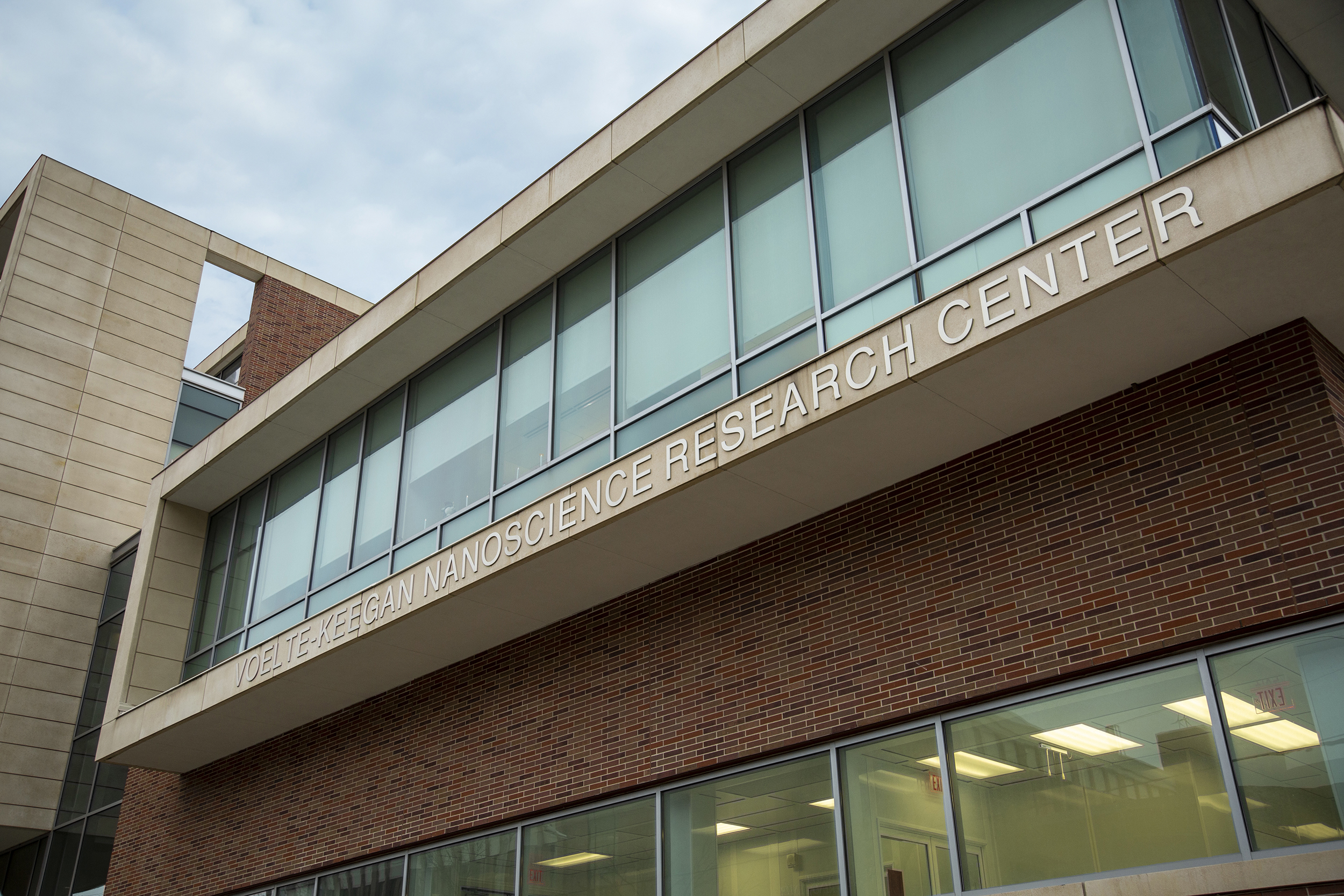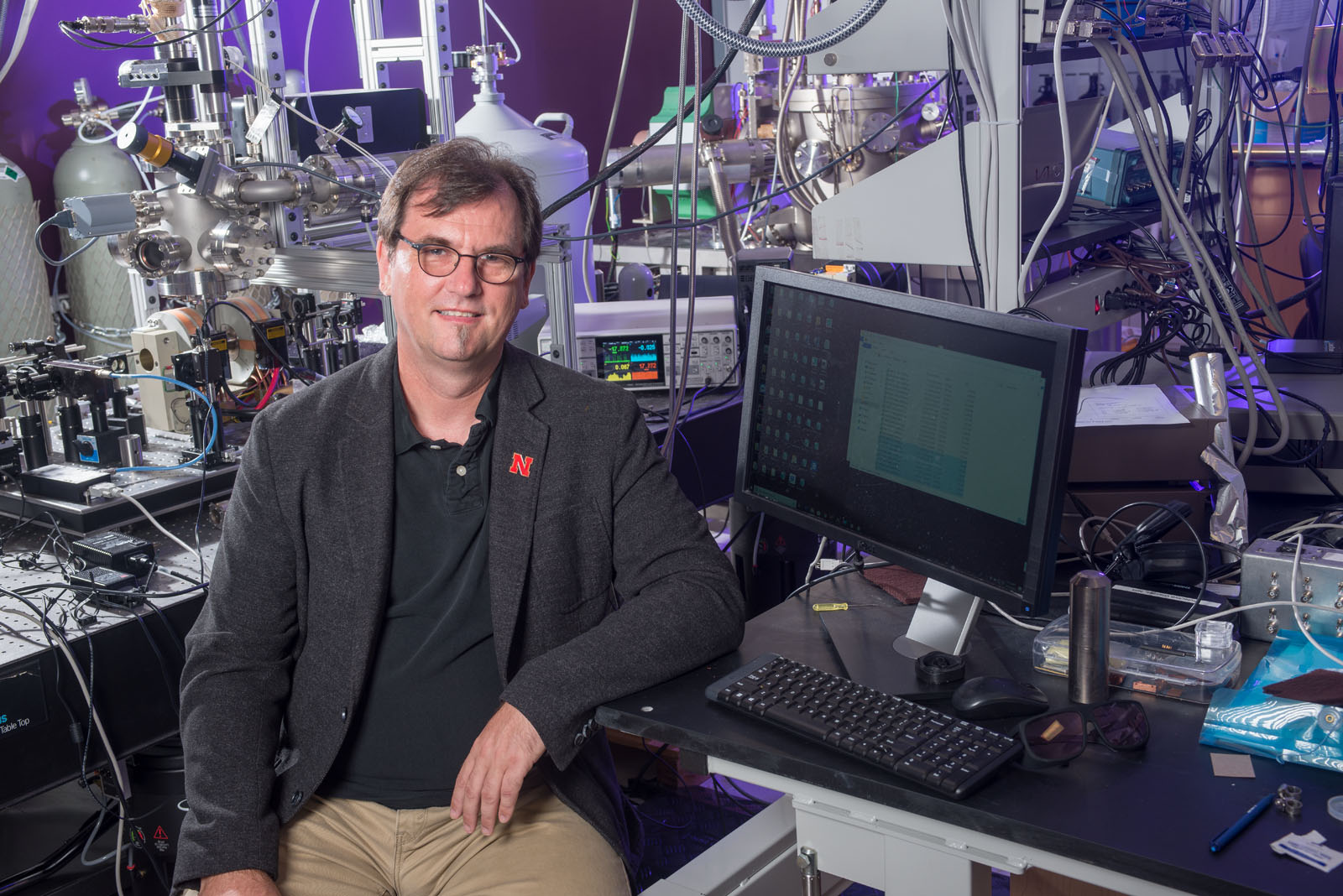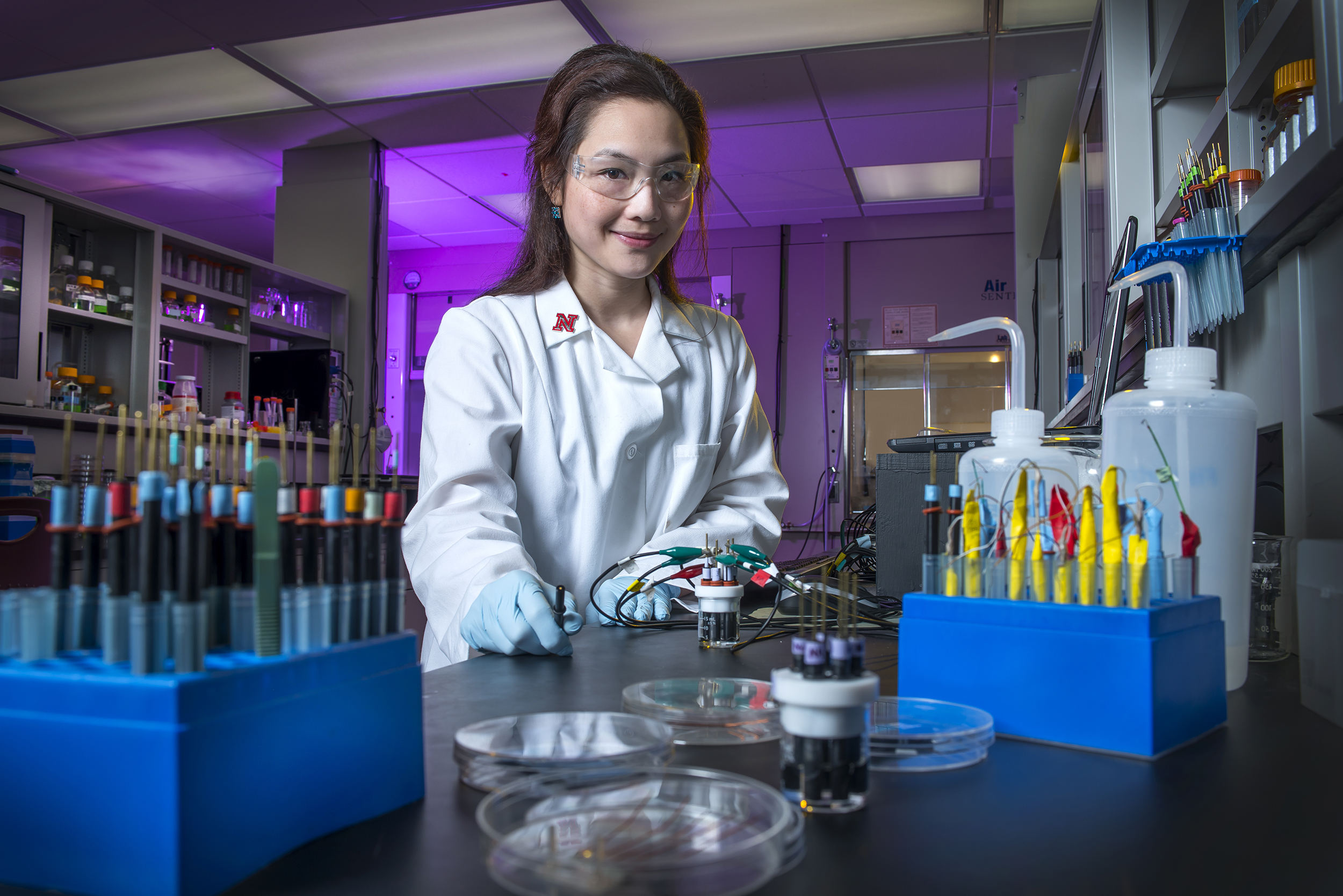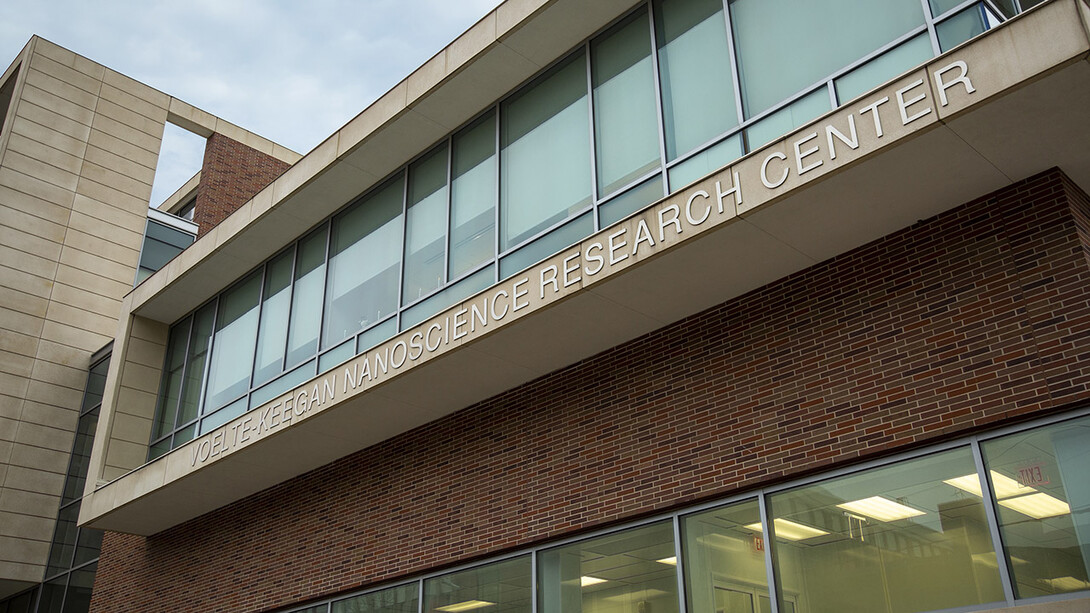
The Nebraska Nanoscale Facility has been renewed for five years, continuing to build on the University of Nebraska–Lincoln’s expertise and leadership in nanoscience and nanotechnology.
The nanoscale facility was established in 2015 with a grant from the National Science Foundation. The latest $3.5 million grant from NSF ensures its continuation through at least 2025.
Nebraska’s facility is one of 16 centers created under the NSF’s National Nanotechnology Coordinated Infrastructure program, designed to advance the nation’s nanoscience research by expanding the equipment and service capabilities of universities and industries.
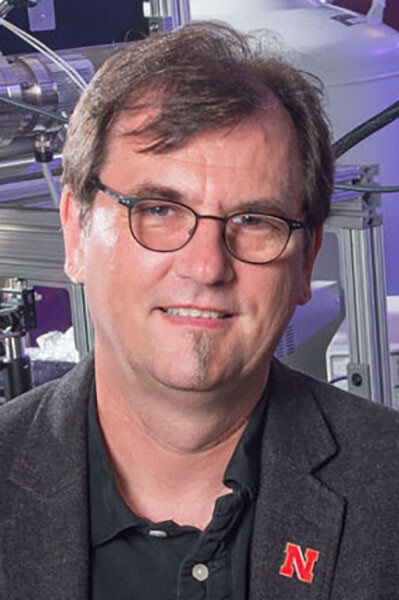
“We can proudly say here in Nebraska that this is quite an elite club we are in,” said Christian Binek, director of the nanoscale facility. The national infrastructure aims to ensure “the entire country is equipped with the tools and expertise to perform nanoscience and nanotechnology.”
“Nebraska’s leadership in nanoscience and technology has long been recognized nationally and globally,” said Bob Wilhelm, vice chancellor for research and economic development. “The renewal of this critical facility will keep us on the leading edge of this very exciting, consequential field of research as it continues to revolutionize academia, government and industry.”
Nebraska also is home to a Materials Research Science and Engineering Center, another nationwide NSF-funded network. The universities that have both a MRSEC and a nanoscale facility constitute an even more exclusive club, noted Binek, a professor of physics.
“With this infrastructure we have, we are in a very good position to play an important role and compete nationwide and even internationally in this field,” Binek said.
Nanoscience research has contributed to technological advances such as improving computing power and other electronics, environmental sensors, medical devices, solar and wind energy, and national defense.
Over its first five years, the Nebraska Nanoscale Facility has been key to helping faculty throughout the region and from a variety of fields further their research.
“Having this facility here allows our faculty from engineering, chemistry and physics to write grants and claim rightfully they have access to state-of-the-art nanotechnology,” Binek said. “It’s all incredibly expensive equipment. No single investigator can afford to buy and maintain it. That can only be done by a center.”
Binek said he expects the Nebraska Nanoscale Facility to continue to play that role and to build on its already robust outreach to industry throughout the Midwest over the next five years.
“We’ve seen enormous growth over the last five years in external users … as industry is aware of what we can do,” he said. “That’s a trend we need to continue in the future.”

Rebecca Lai, associate professor of chemistry and Nebraska Nanoscale Facility assistant director, said the facility greatly outperformed its expectations in both internal and external users in the first five years.
“That’s the goal of having this facility in the western part of the Midwest” — to reach faculty and industry in the region, Lai said.
She said there are helpful byproducts to Nebraska Nanoscale Facility, as industry works with Nebraska scientists and develops relationships that might lead to additional collaborations.
Depending on other funding sources, Binek said, Nebraska Nanoscale Facility also aims to be a major force in research into quantum materials in its next five years.
“Quantum materials are the future,” he said. “We want to claim that stake, that we are leaders.”
Outreach and education also are key to facility’s mission. Nebraska Nanoscale Facility provides education to students in kindergarten and up, and its tools include traveling exhibits and collaborations with after-school programs and 4-H. Lai said nanoscale facility will both expand its current outreach efforts and develop new ones.
Most Nebraska Nanoscale Facility laboratories are in the 32,000-square-foot Voelte-Keegan Nanoscience Research Center that was completed in 2012, with others in the attached Jorgensen Hall, constructed in 2010.
Facilities include state-of-the art equipment for nanometer-scale characterization of materials surface and physical properties; hands-on access to electron microscopes, sample preparation equipment, plus data collection and data processing; materials identification and characterization through X-ray diffraction techniques; three-dimensional characterization of nanostructures using electron beam imaging, chemical analysis and diffraction; and a 4,000-square-foot clean room for designing, fabricating, characterizing and testing complex nano-/microscale structures and devices.
Dawn Tilbury, assistant director for engineering with the National Science Foundation, said the national infrastructure of which Nebraska is a part is critical.
NSF’s infrastructure program “helps scientists and engineers in diverse fields solve challenging, convergent research problems,” she said. “Research and education through NNCI will continue to yield nanotechnology innovations — from interconnects for quantum systems to high-resolution imaging to brain-implanted sensors — that bring economic and societal benefits to us all.”
